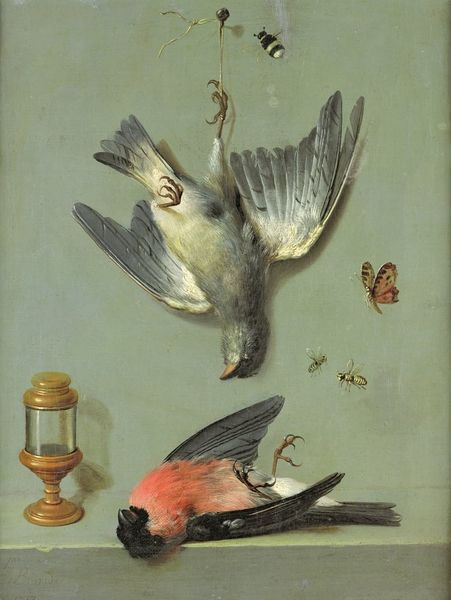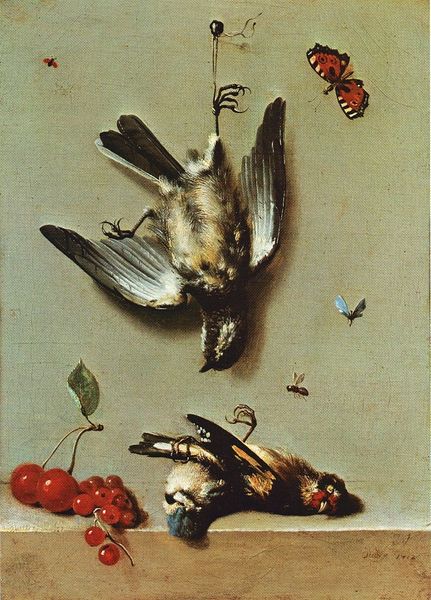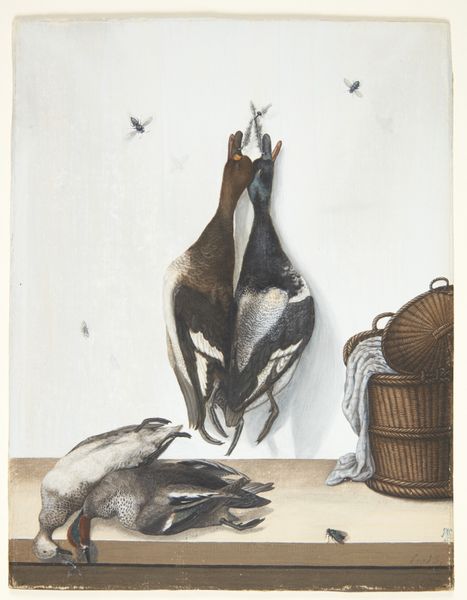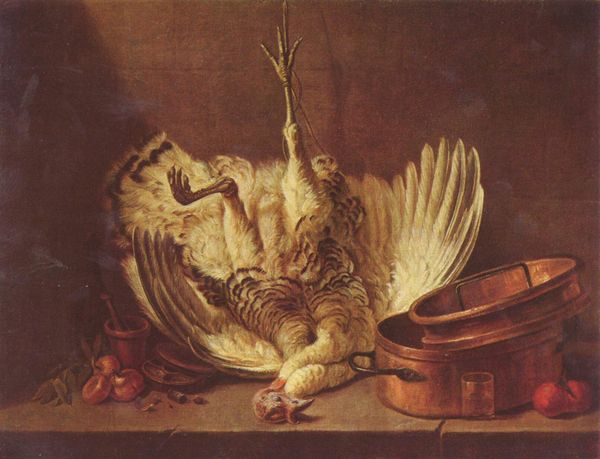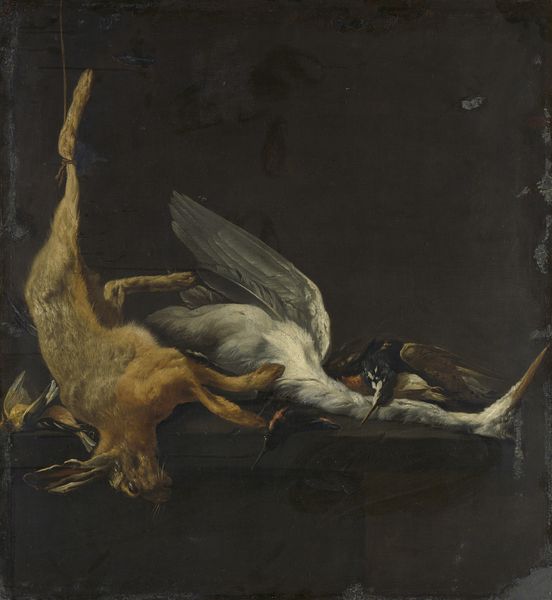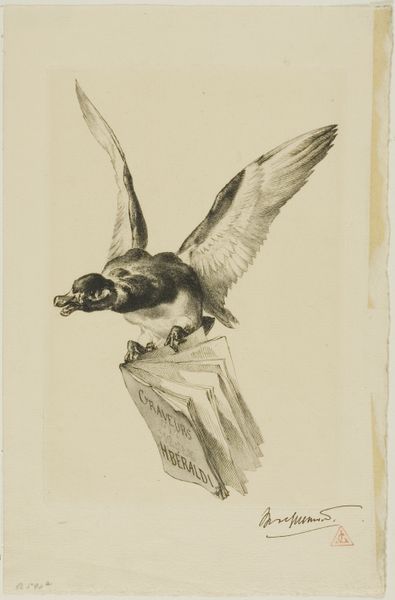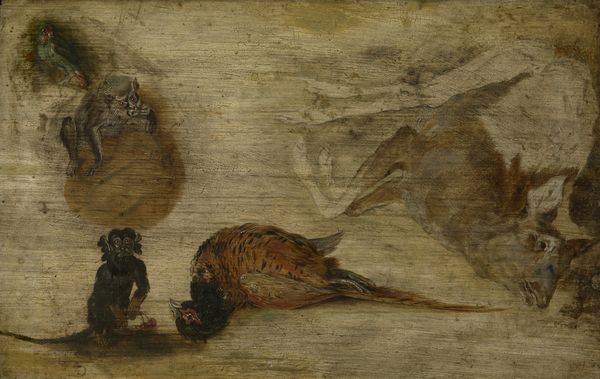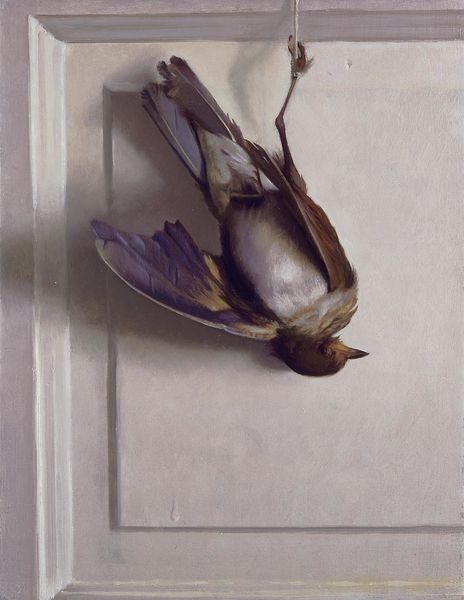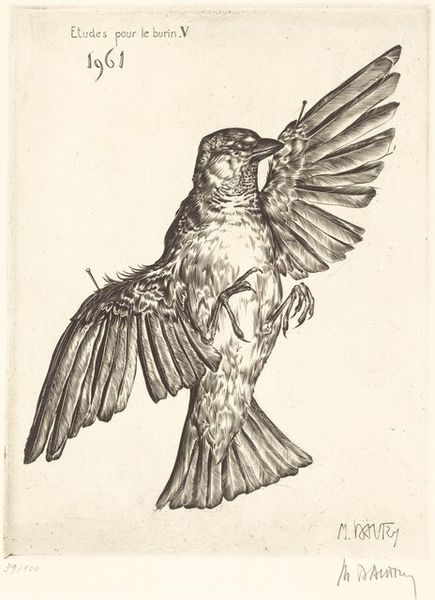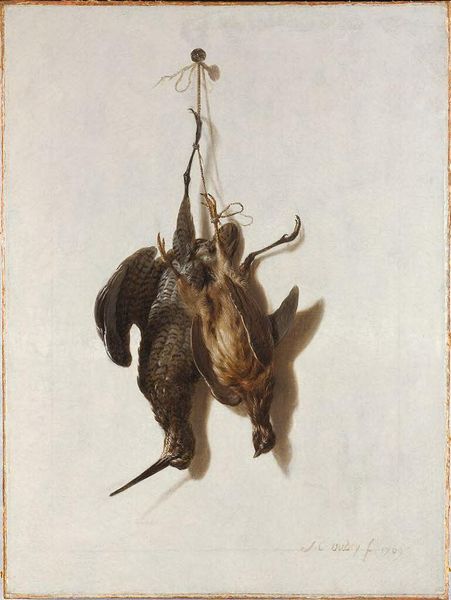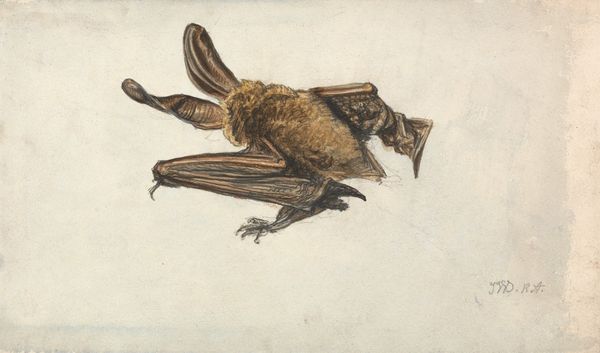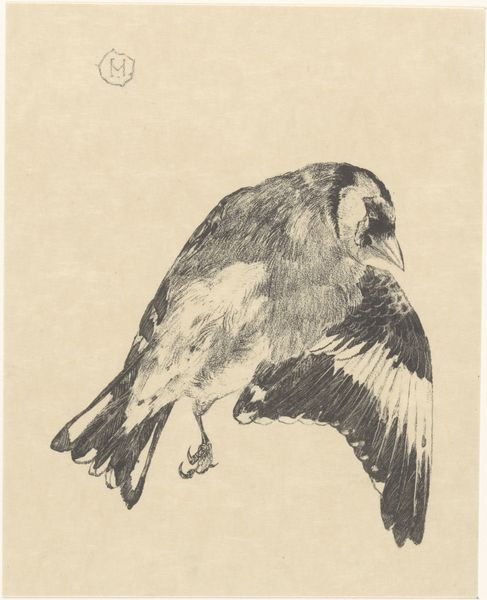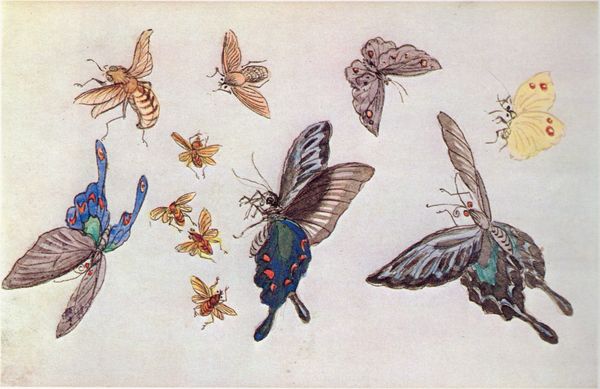
painting, oil-paint
#
gouache
#
baroque
#
painting
#
oil-paint
#
oil painting
#
genre-painting
Copyright: Public domain
Curator: This still life by Jean-Baptiste Oudry, created in 1712, offers a stark yet beautiful arrangement of deceased creatures rendered in oil paint. I am immediately drawn to the contrasts. Editor: I'm struck by the juxtaposition of death and implied life; the still bodies of the birds and mouse, alongside the fleeting presence of the insects. It reads as a commentary on mortality, and perhaps also on the human relationship with the natural world. What does this assembly tell us about labor and class? Curator: Oudry was certainly aware of the culinary and decorative functions of these animals within the aristocratic lifestyles of the period. These creatures become luxury goods displayed for consumption. The materials employed, like oil paint, would themselves have been costly. How did such a painter acquire commissions and materials during his lifetime? Editor: Indeed, it prompts us to consider the social hierarchy where some lives are valued above others. How much does the art industry reflect today on such imbalances of power or of justice when it depicts animal figures in works of art? Who has access to these representations, and whose stories are being silenced in the artistic creation and presentation? Curator: By presenting these animals in this manner, Oudry invites us to reflect on the transient nature of existence, as commodities even, while showcasing his mastery of oil paint to depict minute detail in form and texture. Editor: The artist directs our attention, maybe even complicity, in a social structure where even living creatures are rendered as symbolic, consumable goods. It questions the aestheticisation of exploitation, inviting conversations on responsibility and how we choose to frame nature. Curator: Well said, it is the interaction between representation and viewer which elevates mere visual description into meaningful commentary on culture. I appreciate what insights we can have through material analyses such as these. Editor: Precisely. Examining art through intersectional frameworks encourages much-needed discussions, making the artworks far more than aesthetic objects to become integral sites for collective discourse and meaningful introspection on our place in broader systems of meaning.
Comments
No comments
Be the first to comment and join the conversation on the ultimate creative platform.
